Coping and Catharsis: Autistic AFOLs In Their Own Words
Following my first article for BrickNerd discussing my Autism diagnosis and how this relates to me being an AFOL—especially how LEGO has been a strategy with supporting this—I wanted to gain the perspectives of other Autistic AFOLs. I sought out other AFOLs who felt safe enough to share their experiences.
Rather than summarize what they said, I’ve opted to include their own words because I think they are more powerful coming from the source. Here are the interviews I conducted.
Molly Belfield: Speaking LEGO As A Common Language
Kate: When did you get your diagnosis, and can you summarise, if you’re comfortable, how it affects your daily life?
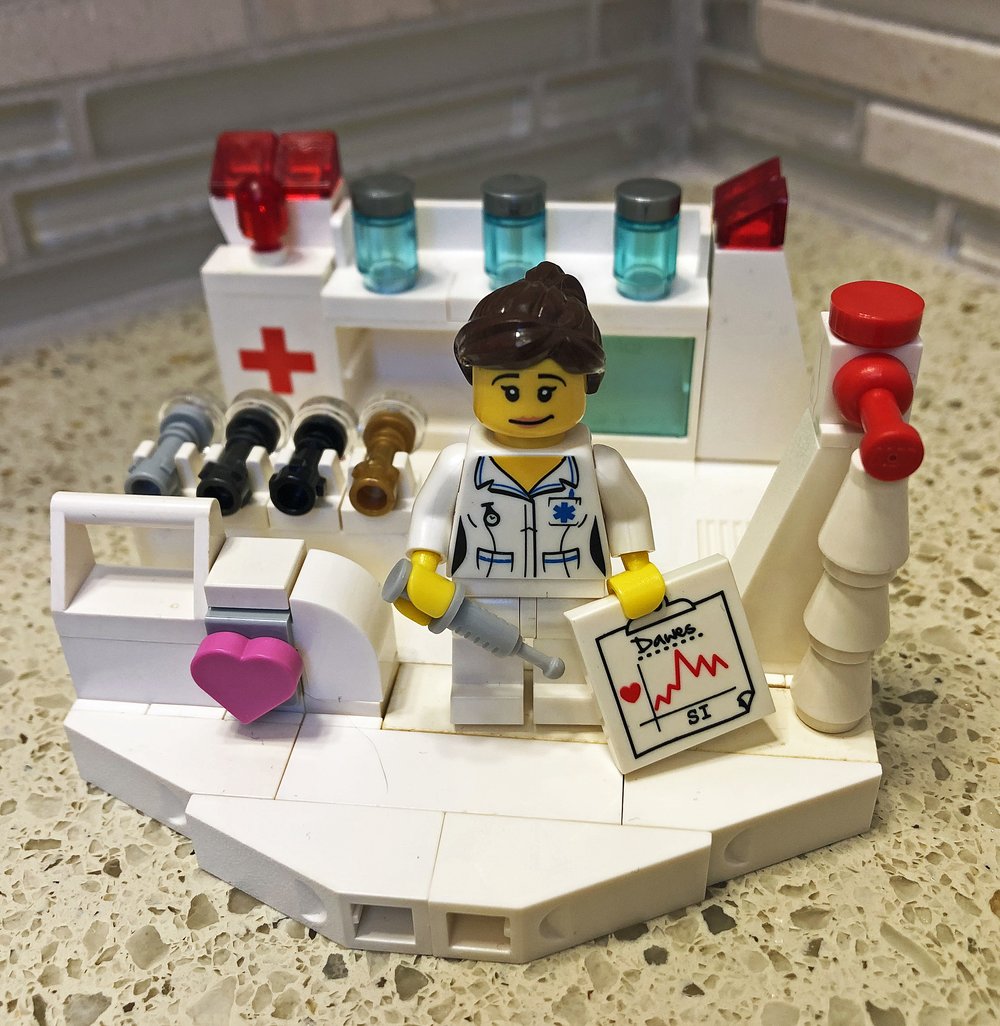
Image by Chris Christian.
Molly: I was diagnosed with Autism when I was 21. At the time, I was at university studying to become a paediatric nurse. Although I don't often tell people that I'm Autistic, I now feel so much happier because everything just seems to make more sense. I always used to think I was a bit strange when I'd have a particular word stuck in my head for days or when I like to talk in different accents. Sometimes I'm self-conscious about these things, but other times I just let me be myself. I think having Autism makes me a good nurse—it's good to have a bunch of people in a nursing team who all think differently, particularly in Accident and Emergency where I work.
Kate: When did your journey into LEGO begin, and what role does LEGO play in your life?
Molly: I would say that I was into LEGO as a child, just like most children, but I really started to love it more recently. In September 2021, I was quite poorly in intensive care and my recovery is still ongoing. I rediscovered my love for LEGO at this time and have probably quadrupled my LEGO collection in size in the past couple of years. I used to love sets. I still do love sets, but I'm now more adventurous when it comes to making my own creations. LEGO is now my favourite hobby—I've been to different LEGO shows and would love to present a display at one in the future.
Kate: Do you feel that LEGO is a support mechanism?
Molly: LEGO was really good for my recovery. It was great for fine motor skills when building and for my imagination. LEGO is great for days when I'm not at work. I'm most relaxed when I have a LEGO day.
Kate: Do you have any particular LEGO or LEGO-themed items that you collect?
Molly: My favourite LEGO theme is LEGO City. I particularly love animals and foliage—don't know why. I'm really hoping to get a hospital set one day!
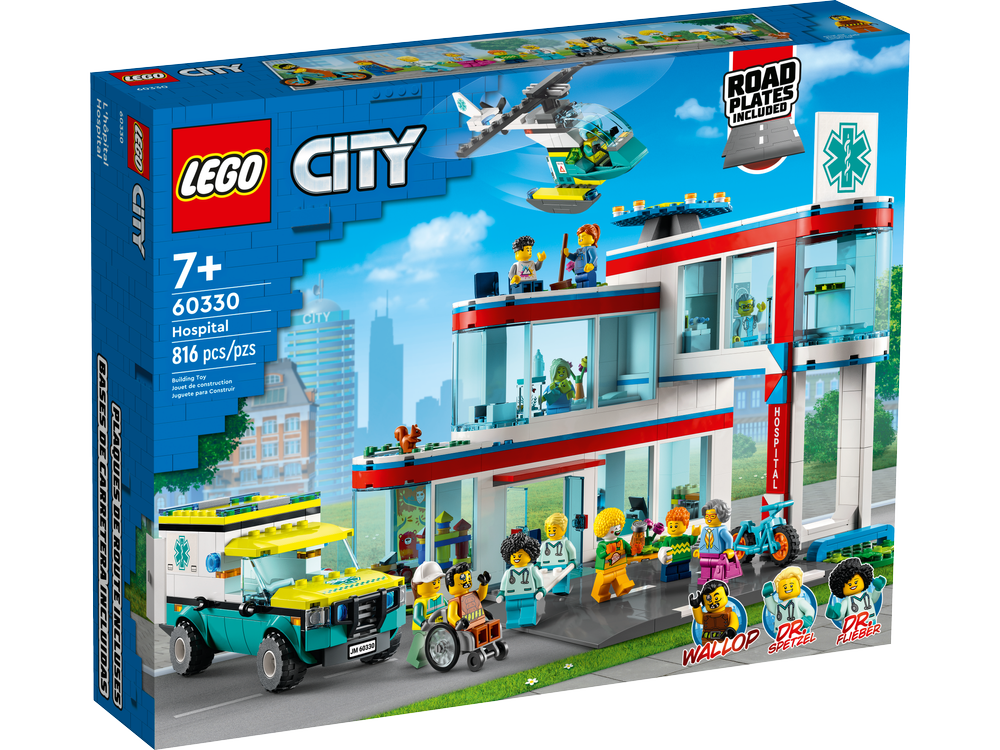
Kate: How do you feel about interacting with other people? Does this feeling change when you are interacting with other AFOLs?
Molly: I find talking to other AFOLs is a lot easier than talking to non-AFOLs. I could talk all day about LEGO so it's great to have that in common with some people who actually don't mind listening! I find I can talk to anyone about LEGO whether they're that interested or not.
Kate: Is there anything else related that you would like to share?
Molly: I really love sorting LEGO, almost as much as building. I think that's an Autism quirk!
Suzanne Eaton: Avoiding The Addiction of Collecting Them All
Kate: When did you get your diagnosis, and how does it affect your daily life?

Hidden Side Minifigure via BrickLink.
Suzanne: Ever since learning about Asperger's and spending time online with the adult Autistic community (thanks to my son's diagnosis), I've suspected this for myself. By the time the pandemic hit, I realized I needed the sort of help that an official diagnosis could facilitate. So, I went through a multi-day full neuropsych evaluation. There were lots of tests and questionnaires for friends/family, etc. When the results came back, my scores were off the chart in both directions and I received multiple new diagnoses, including high-cognitive Autism. Honestly, this came as a relief because the new report made more sense to me than some prior diagnoses (for which treatment had never been successful). I was glad to see my strengths confirmed, and I could see what to target for coaching, school and work accommodations, and medication.
My daily life today has the sorts of physical and tech supports you might expect (noise-canceling earbuds, smart-watch reminders, soft clothes, etc.) but I still have trouble with things that many typical people take for granted. For example, I'm easily overwhelmed at big events (even just food shopping), I'm forced to make a lot of backup/back-out plans, and it's still difficult to build new lasting relationships. People can misunderstand my intentions or perceive me as "odd" or too intense. My view of the world tends to come out as both unabashedly ecstatic at certain little bits and morosely honest at a grander scale. I can get stuck on things I find fascinating, and an unexpected change can be unsettling. I'm seen as an introvert, but that's less true when I'm with other neurodivergent folks. If I sense that they share my values and accept the real me, I open up more.
Kate: When did your journey into LEGO begin, and what role does LEGO play in your life?
Suzanne: I've loved LEGO since childhood and was delighted when my parents bought the Classic Space set I wanted in 1978 (before then, I'd been given homemaker and hospital sets). I continued to fiddle with the elements through art college, but I only really deep-dove into the hobby when I saw the 9v train sets. That line's first big sets (including the Metroliner) were nearing retirement right when I had my first salary job, about the same time when I could treat myself to such things almost on a whim. So, feeling a fear of missing out, and after short deliberation (Playmobil also offered train sets then), I dove in.

IMage via Brickset
LEGO quickly took over my home. My cat became jealous of the colorful buildings and chewed a vintage aerial for attention. One night, I sat, surrounded by bricks, and realized that this was "not normal." I pledged to fix the things in my work and romantic life that had driven me to this point. Then, after thoughtfully considering my future and priorities, I made a trip to Home Depot and proceeded to screw a full sheet of plywood to my dining table for my first multi-level custom train/town layout.

I frequented rec.toys.LEGO on Usenet and was thrilled for this social outlet. Through there, I found other local fans to meet up with. I also found Todd Lehman who joined me in Massachusetts and we built LUGNET, which offered the community a web interface and organized forums. We funded our passion projects by auctioning parts in bulk lots through an e-mail list and custom software. Eventually, I freelanced for the LEGO company as an artist in R&D.
Nearly 30 years later, LEGO is still a big part of my life. I use it as a creative medium and as a temporary escape from the "real" world. I'm active in my club (NELUG) and have grown close enough to some members that they feel like family. In fact, I married another early NELUG member. Now we have a son and we share a big LEGO studio at home.
Kate: Do you feel that LEGO is a support mechanism?
Suzanne: The hobby is absolutely a support mechanism. It soothed me through very dark times and it functions as a launchpad for my social interactions. It also supported me financially and helped me feel accomplished and valuable.
The not-so-pretty flip-side to this is, sadly, the risk of addiction—which I feel is not discussed enough. I've personally had to define limits to my financial, time, and physical-space spending. Even in the 90s, I felt worried about AFOLs "self-medicating" with their LEGO habit, and I created a discussion area for those who may need help. Impulse control can be hard for people on the spectrum, and it can be hard for people to realize or admit they have a problem.
Today, as the hobby gains attention, I feel concerned that our more passionate adult enthusiasts may receive unwanted labels from the world at large (ala "crazy cat lady" or Japanese "otaku"). It would be unfortunate if a negative association develops.
Kate: Do you have any particular LEGO or LEGO-themed items that you collect?
Suzanne: I've ceased any strict collecting because that puts me in a position of losing control of my spending to LEGO and their releases. This was a hard lesson to learn. But, thanks to increases in their targeting of adults, I've rejected the idea of theme/line completeness in favour of autonomy. In the past, I collected 9v Train sets, Technic motorcycles, educational sets, and some other things. But now I'm far more selective. I miss the days when sets were at a low enough price point that I didn't have to miss out on so much. But it's that or leave the hobby.
Kate: How do you feel about interacting with other people? Does this feeling change when you are interacting with other AFOLs?
Suzanne: All social situations are stressful for me, but some are more draining than others. My easiest interactions are with neurodiverse folks and anyone who shares my passions or special interests (of which LEGO is but one). I've bonded with so many AFOLs at this point that I kind of assume from the get-go that I'll have a good interaction with them. I'd say these are my peeps who teach me the most regarding social skills. With our common interest providing an ice-braker, a reason for meetups, and a safe conversational homebase, I can invest the time and thought necessary for deep familiarity and respect.
Basically, when I enjoy their company and feel safe, I want to see their perspectives. From there, any feedback (social missteps, praise, or whatever) comes with heavy weight and lasting impact. I really love that they help me to grow as a person, even if it's an unintended byproduct. I'm indebted to the hobby for that.

NELUG via LEGO LAN.
Kate: Would you like to share any last thoughts?:
Suzanne: I've noticed that social skills groups have been forming for kids like my son, run by therapists, using LEGO as their common interest. I think this is a wonderful tool with great potential when used appropriately. I've been leaning in this direction myself—hoping to work with some young people.
As it becomes more common for adults to purchase LEGO for themselves, I'm eager to see how things go with more neurotypical adults entering the community. Will the newcomers continue with the hobby, appreciating its potential more deeply? Will we learn from each other and increase our understanding? Or will the fandom divide itself into separate camps? I already observe some of this happening as newer fan events have different priorities and offerings. And I remember how the community shifted when Star Wars fans entered. It will be interesting to see what happens! Thanks for bringing up this important topic!
Al Saunders: Keeping LEGO In Your Pocket
Kate: Thanks for chatting with us. When did you get your diagnosis?
Al: I got diagnosed last year, although I've probably had it since I was 15—it makes a lot of sense about my behaviour as a child.
Kate: When did your journey into LEGO begin?
Al: When I was about 7 or 8 my folks brought me a LEGO Space set. I only started MOCs a few years ago, and I go to the odd LEGO event as there are not many my way.
Kate: Do you feel that LEGO is a support mechanism for you?
Al: LEGO does help me cope with my Autism—it makes me focus. It's the tactile contact with the bricks that chills me out. I do collect more City stuff and Hidden Side, though I’m looking forward to the new Dreamzzz sets.
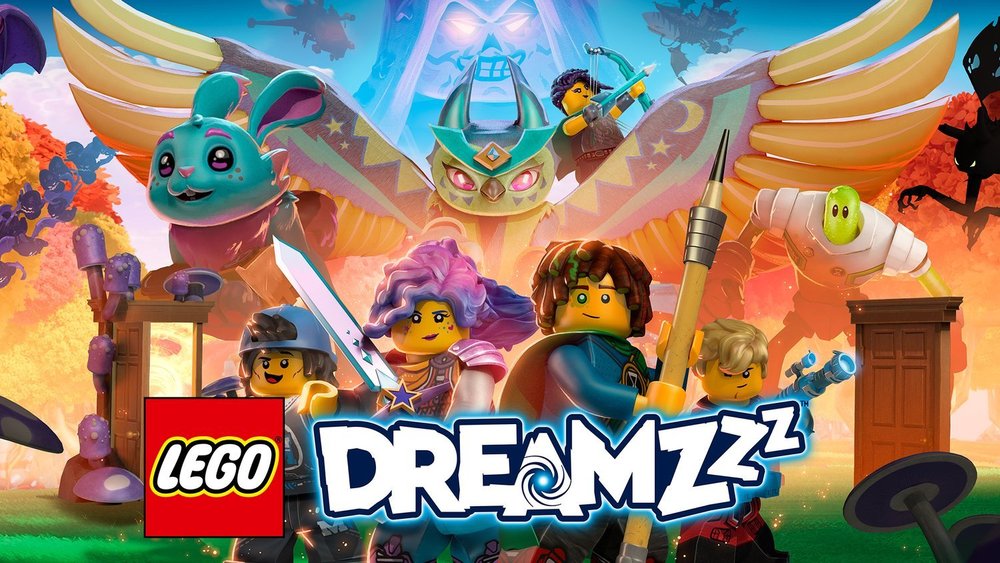
Kate: How do you feel about interacting with other people? Does this feeling change when you are interacting with other AFOLs?
Al: I only interact with a small group of friends… I can freak out in large groups but I usually have a piece of LEGO in my pocket to keep me calm.
Kate: Is there anything else you’s like to share with us?
Al: I should have gotten a diagnosis ages ago, but I have done it now, so it’s all good.
Matt Fonzie: Interacting On Your Own Terms
Kate: Thanks for chatting with BrickNerd. When did you get your diagnosis?
Matt: I was diagnosed in my mid-30s by a lady who didn’t know what a dinosaur was. As for daily life, I see the world in a different way—I don’t understand all the social aspects of the world and emotions in general.

Kate: When did your journey into LEGO begin, and what role does LEGO play in your life?
Matt: My love of LEGO started when I was very small and has continued through life to where I am now. I’m buying sets and collecting retired sets for investments in the future. Currently, I’m building a minifigure scale Minecraft Valley MOC, which I display at shows around the country and on my YouTube channel. LEGO helps me to focus my ideas into a physical form which helps keep me calm. I collect varied LEGO sets, mainly Technic, Ideas, vehicles, and Botanicals for my wife. I also buy Minecraft sets for my MOC project.
Kate: How do you feel about interacting with other people? Does this feeling change when you are interacting with other AFOLs?
Matt: Social interactions are DIFFICULT, to say the least, even with other AFOLs. Once I feel comfortable, I’m happy to chat for a while. I have a small group of folks I engage with this (my social circle that I am comfortable with). I’m trying my best to raise awareness of Autistic folks in LEGO through my YouTube channel.
Anonymous: Using LEGO As A Baseline For Relationships
Kate: Thanks for chatting with us, even anonymously. When did you get your diagnosis?
Anonymous: During my son’s diagnosis, I realised that I had many of the same behaviours and identified lots of patterns in my life that could be explained. Getting a diagnosis myself as an adult has helped me deal with lots of childhood issues and eased my daily life tremendously.
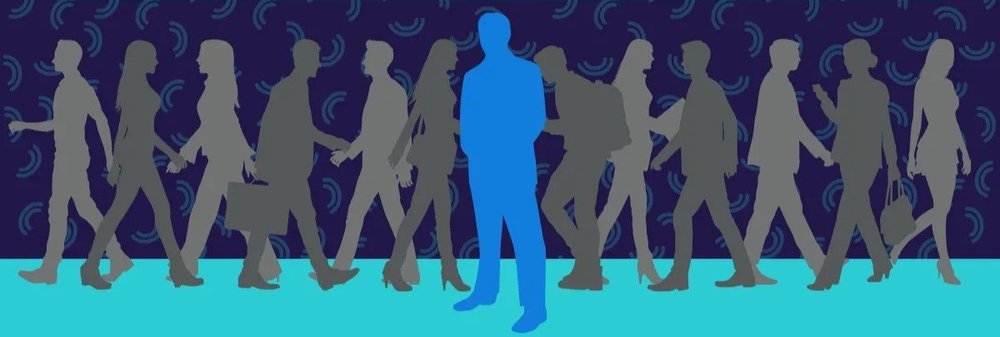
IMage via Emily Shelton
Kate: When did your journey into LEGO begin, and what role does LEGO play in your life?
Anonymous: I got back into LEGO as an adult about 13 years ago when my older children got to an age when they wanted to play with it as a toy. I found an old box of childhood LEGO at my dad's house that I fetched for them, but it triggered all sorts of happy memories as I pulled out parts to sets my brothers and I had back as kids. As I started to play, I realised how much I enjoyed it, and then I found other adults who played too, and then started to make new friends and build a community. This has led to making social groups, organised clubs, and attending events around the world.
Kate: Do you feel that LEGO is a support mechanism?
Anonymous: I use LEGO as a way to interact with others. It gives me a baseline that I can use to build and maintain relationships with people. I enjoy building with bricks but I enjoy more the way it helps facilitate relationships.

Image via LEGO.
Kate: Do you have any particular LEGO or LEGO-themed items that you collect?
Anonymous: I'm very conscious of my desire to collect things and so I take great pains not to collect sets or themes. I do have items of 'treasure' that I keep. These are all small items of sentimental value that I have acquired at a certain place or from a certain person, and they all have emotional value to me.
Kate: How do you feel about interacting with other people? Does this feeling change when you are interacting with other AFOLs?
Anonymous: I have always suffered from crippling social anxiety when I know I have to interact with people for any reason. I've taught myself to mask over the years but that only helps with work, where I have minimal interactions with people, and in essential interactions where I can bluff my way through. In the hobby, I've met lots of other people on the spectrum that I find I can relate to, and with the other fans, they all seem not to mind a good info dump of hobby-related chat, so I feel much more comfortable talking to other AFOLs.
Em Billington: My LEGO Family Is The Nicest
Kate: When did you get your diagnosis and how has it affected your daily life?
Em: I was diagnosed in October 2020. My son is Autistic (he’s 19 now, he got diagnosed at 6) and I knew I was because I knew exactly what he was going to do next and how he was going to react to things—the same as me! I have five children, and he was completely different. I suspect my daughter is Autistic as well; she’s the youngest (15). I kept my Autism secret for quite a while.

Image via LEGO
My daily life is much different than before the lockdown, I liked lockdown because I didn’t have to go anywhere and most places were a lot quieter and it just seemed a huge shock to me when everything went back to normal as people partied harder and there were crowds of people everywhere. I don’t actually fit in with many people or in many places.
Kate: When did your journey into LEGO begin and what role does LEGO play in your life?

Em: I started the love of LEGO when my children were small (the eldest is 32), but when they stopped being interested in it, I stopped. However, I did keep most of it. I met my partner four years ago, and he liked LEGO but we never mentioned it. The first year we were together, I bought him a Yoda set and we made it together and both admitted how much we enjoyed LEGO.
We now belong to many groups and go to meet-ups and shows. I had to buy four cupboards for my front room to accommodate it all! I have displayed some of the old LEGO—I have two stands with figures and two MOC buildings (a bar and a huge Asda store).
Kate: How do you feel about interacting with other people? Does this feeling change when you are interacting with other AFOLs?
Em: I hate interacting with other people. I tend not to go out much on my own. People say things like “I don’t have time to play with LEGO.” Now I’ve found the LEGO groups, it feels like I’ve got a new life with people who like the same things and have the same interests. The LEGO family are the nicest bunch of people I know.
Tobymac: LEGO Saved My Life
Kate: Thanks for being our final interview! When did you get your diagnosis and how does it affect your daily life?
Tobymac: When I was 25, I was first diagnosed with depression after years (lifetime?) of feeling down, tired, and having constant chaos in my head… up to the point it was affecting my job as an analyst in a clinical chemistry lab. After a year of patching up, I went back to my job only to fall back a few months later. On strong advice from my wife, the psychiatrist decided to look into the actual cause of the depression and a possible link with Autism.
After an interview, I got my diagnosis of Asperger’s when I was 27. It took another couple of years to dig through layers of issues to find an underlying PTSD and figure out the best way to fix me up. In the meantime, I lost my job and got marked as unable to work again, so that had a big impact on my life. In daily life, I need my wife to do most of the social contacts. She is my portal and translator to the ‘real world’ and helps me with practical stuff, like planning a visit to a LEGO show.
Looking back, Autism can explain a lot from my childhood, like communication problems, seeing things differently (which was usually perceived as ‘wrong’ by others), and obsessive collecting.
Kate: When did your journey into LEGO begin and what role does LEGO play in your life?
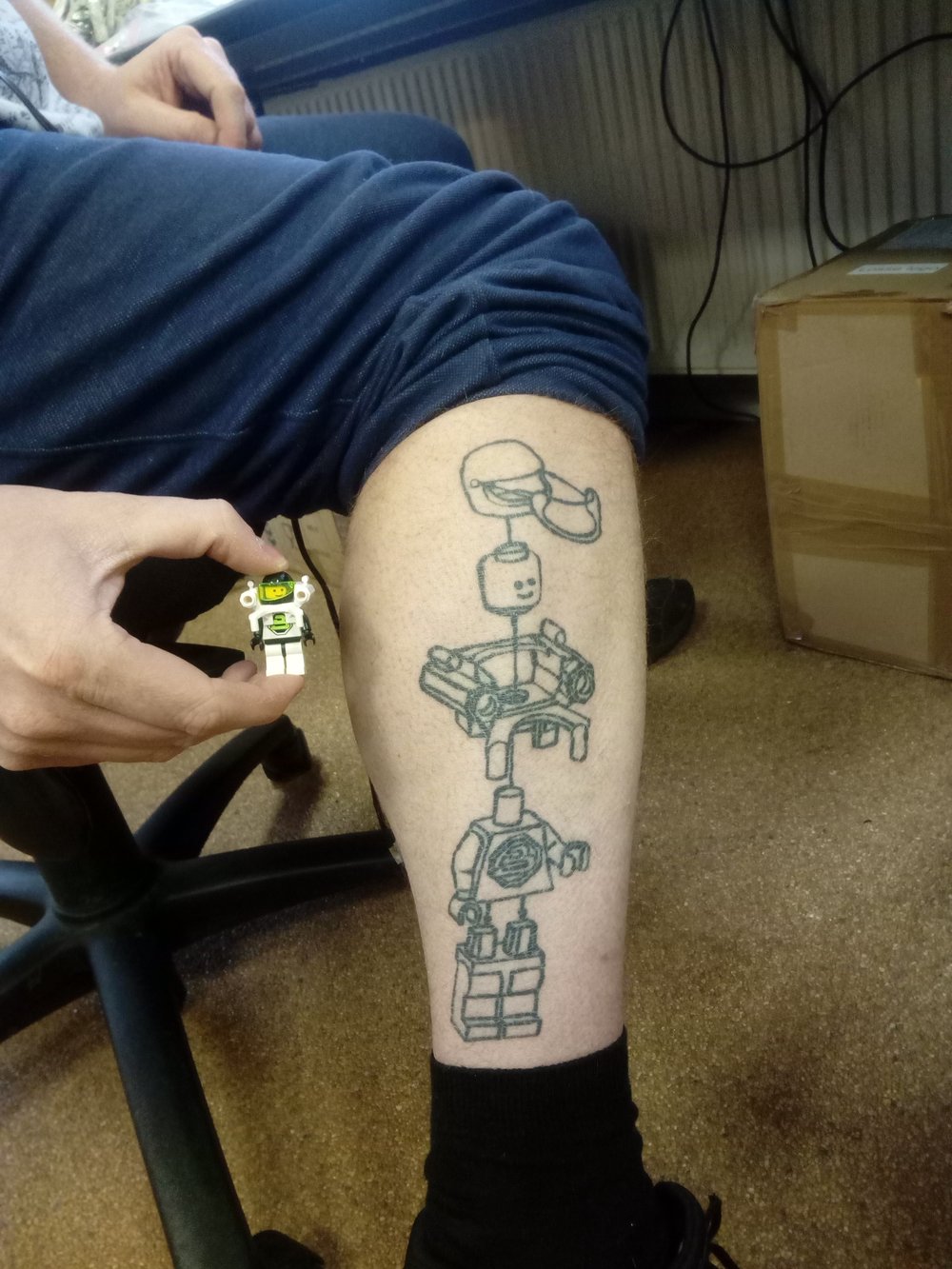
Tobymac: As a kid, I played a lot with Space sets (Blacktron II, Space Police II and Ice Planet 2000) as a way to escape from a world which was confusing, overwhelming and scary. Later on, I discovered Technic as well. I love LEGO sets that can move.
When I went to college in 2000, I entered my Dark Ages. After I got married, I got my old sets back (around 2008) and started building again and was amazed by all the new parts that were introduced. When I discovered Rebrickable and became an admin, LEGO became an all-consuming part of my life, up to the point where it became life-saving.
My LEGO activities involve writing reviews (for Rebrickable and New Elementary), maintaining the database for Rebrickable, and collecting specific items. I prefer to build with instructions, so I don’t have to think and come up with solutions but just mindlessly follow the pictures. I rarely build my own MOCs. I don’t have the confidence and focus/patience to sit down and try different things. I sometimes make something in Stud.io, but that is mostly simple stuff like stands for my collections. I sometimes attend LEGO shows, but only when it’s within a short distance or my wife needs to drive. After two hours or so my batteries are drained, so the trip needs to fit into the schedule for the surrounding days.
Kate: Do you feel that LEGO is a support mechanism for you?
Tobymac: I can honestly say LEGO saved my life. I’ve been through some dark times with suicidal tendencies and self-harm. Building a LEGO set was one of the few things that could get me out of my head in a healthy way and give me some calm.
With my function as a Rebrickable admin and a contributor for New Elementary, LEGO also provides a sense of purpose and something to focus on. It also puts me in contact with other AFOLs around the world. I think I know more people online than in the real world. I’m Dutch, but speaking English online so much makes it sometimes tricky to remember the correct grammar when writing Dutch.


Kate: Do you have any particular LEGO or LEGO themed items that you collect?
Tobymac: I’m very sensitive to collecting. I just need the full set, no matter what it is. It started as a kid with stamps, rocks, and whatever I was able to get my hands on, including coloured drinking straws I found after a festival.
When I see a LEGO part, I wonder how many colours there are for it, and how many prints, and I have to keep myself from going down the rabbit hole every time. I even have a Python script that can get me a colour and print report for any mould.
View fullsize
View fullsize

The first collection was printed versions of 98138 Tile Round 1 x 1, which has spread to any Tile 1 x 1, be it square, round or heart-shaped. My excuse was saying these all come as spare parts in sets, reducing their price.




My biggest ‘mistake’ was obsession over the Nexo Knight shields which cost more than I want to know. Then, the macaroni tiles came, and other round tiles followed. I’ve been able to hold off Tile Round 2 x 2 due to the massive amount of prints… for now. Tile 2 x 2 and Tile 2 x 4 are in the same boat. The 2 x 4 has some special prints which can go to €50- a piece! When I start a collection, I want to be able to get it complete.
View fullsize
View fullsize

I am losing the battle though, as I just got the VIDIYO tiles, and more 2x2 tiles are on their way. I just can’t stop the nagging feeling in my head, and the short release of serotonin when I place a new addition on the board is too addictive.
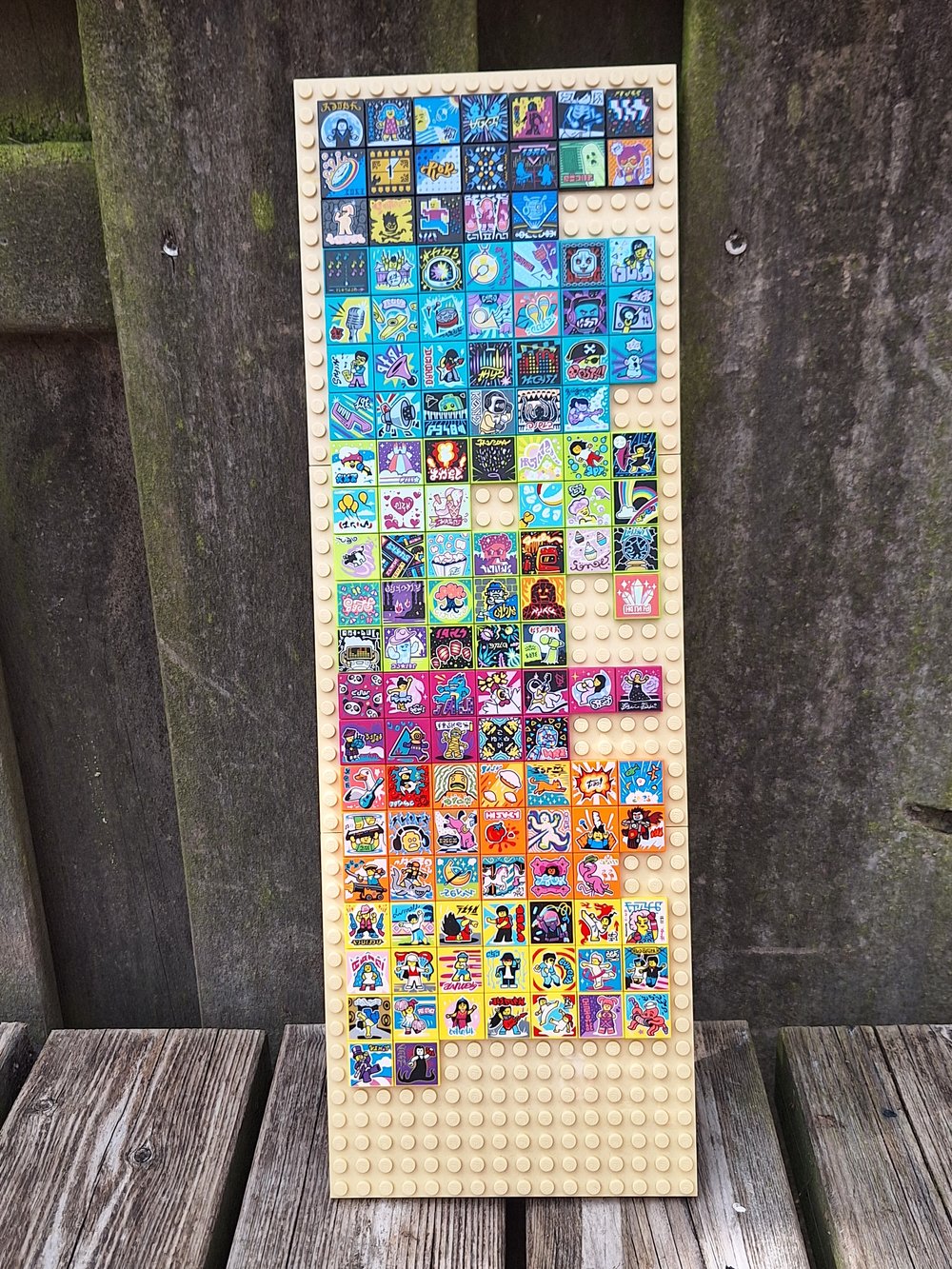
I also fell into the trap of microfigs, followed by nanofigs/statuettes and microdolls (aka Friends kids). For the nano figs, I’m only missing Iron Man, which starts at €75 on BrickLink. The empty spot mocks me every time I see the stand. I have a box with Jack Stone figures somewhere, but I am not sure if they will get a stand due to their size.




I also have most Brick 1 x 1 and Brick Round 1 x 1, Brick 2 x 2 Sloped, Cheese slopes 1x1 and 1x2, and a load of small 1x1 parts. I’m not sure if it’s still healthy at this point…
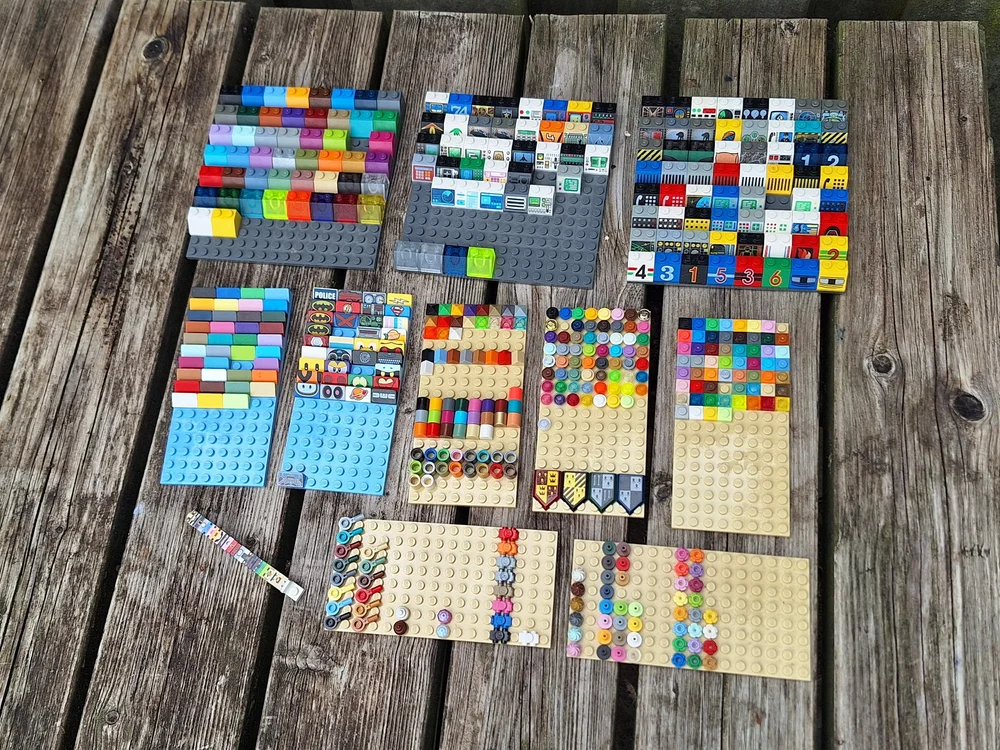
I’ve been able to hold off most sets and themes at this point, aside from Space Police II and Ice Planet 2000, purely for nostalgic reasons. Blacktron II is still calling out to me.
Kate: How do you feel about interacting with other people? Does this feeling change when you are interacting with other AFOLs?
Tobymac: I am terrible at chitchat. If a conversation doesn’t have a goal, I’d rather look at my phone. Unless it’s a topic I’m interested (obsessed) with, then you can’t get me to shut up. I always feel awkward whenever I’m talking with people, often doubting myself afterward. Part of my PTSD is caused by missing social cues, which caused problems in school, work and anywhere social interaction is needed, combined with people not understanding me and trying to ‘fix’ me by forcing me to behave ‘normal.’ This got so bad I developed a paranoia for others, low self-esteem, and a need to overcompensate by working extra hard, ultimately breaking me.
Talking about LEGO is one of the things I feel (sort of) comfortable with, although I can go into oversharing mode (I’m at the end of page two now for this Q&A, for example…). The biggest influence LEGO has had is on my children. I’m terrible at talking directly one-on-one. But with a LEGO set between us to build, I have a conversation starter and something to occupy my hands and eyes while talking.

Image via LEGO
In the long run, it helped me get into contact with my kids (two of whom are also on the spectrum), now also without the direct need for a LEGO set. Being part of a team at Rebrickable has also helped improve my social skills. It’s all done digitally, so I have time to think over my answer—I’m terrible ‘on the spot.’
I think at this point, 95% of my communication is related to LEGO, be it in the Rebrickable admin team, New Elementary group chat or social media. The only reason I’m on Facebook, Twitter and Instagram is to join groups and follow LEGO designers.
Coping and Catharsis
As I summarise this article, I realise what a privilege it has been to hear the stories of others. I would like to thank all the AFOLs who have shared their stories. Without them, this article would not have been possible! I am thankful to them for contributing to raising the profile of Autism.
My main takeaway, especially seeing how each person answered the same questions differently, is that LEGO can be both a coping mechanism for catharsis and an addictive outlet for collecting. But more importantly, it is a conduit to a community speaking the same language and on the same page as those with Autism, granting them the ability to feel like they belong as-is. Ultimately, LEGO can be a safe space for everyone.
What are your experiences with LEGO and Autism? Let us know in the comments below!
Do you want to help BrickNerd continue publishing articles like this one? Become a top patron like Charlie Stephens, Marc & Liz Puleo, Paige Mueller, Rob Klingberg from Brickstuff, John & Joshua Hanlon from Beyond the Brick, Megan Lum, Andy Price, Lukas Kurth from StoneWars, Wayne Tyler, LeAnna Taylor, Monica Innis, and Dan Church to show your support, get early access, exclusive swag and more.

